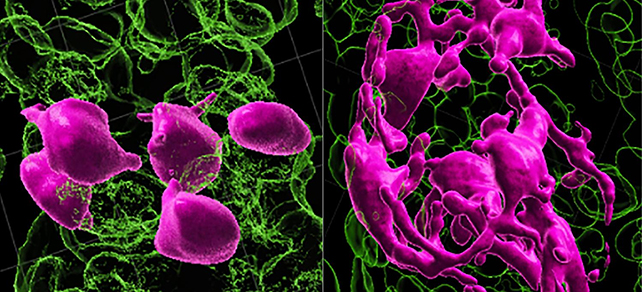Scientists studying hair follicles in mice may have finally uncovered a mechanism behind how and why hair turns gray, which could one day lead to potential new ways to stop or reverse the process.
On a basic level, we already know that hair goes gray when specialized pigment-producing cells called melanocytes are in short supply. But we still don't fully understand why or how that happens – or if there's a way to prevent it.
A new study now adds some extra detail while challenging previous ideas about how melanocytes develop.
Melanocytes are derived from melanocyte stem cells (McSCs) in the hair follicle, and it's these stem cells that the latest research focuses on.
It seems that as we get older, these precursors to the pigment-producing cells get 'stuck' in a region called the follicle bulge, and stop developing into melanocytes in sufficient numbers to fill the growing strand of hair with color.
In tests on mice, after a forced aging process the number of hair follicles with McSCs lodged in the follicle bulge increased from 15 percent to almost half.
These cells were no longer regenerating or maturing into cells that could make pigment and were staying stuck as McSCs instead.
"Our study adds to our basic understanding of how melanocyte stem cells work to color hair," says dermatlologist Qi Sun from New York University. "The new-found mechanisms raise the possibility that the same fixed positioning of melanocyte stem cells may exist in humans."
"If so, it presents a potential pathway for reversing or preventing the graying of human hair by helping jammed cells to move again between developing hair follicle compartments."
The researchers found that McSCs, unlike other stem cell types, can switch between a pure stem cell state and what's known as a transit-amplifying (TA) state: this is a sort of halfway state between a stem cell and a full melanocyte cell.
It seems this TA state is important for McSC health and the continuing production of hair color, but the team found that being able to switch into TA mode depends on signals from specific locations – which the cells get cut off from when they're stuck in follicle bulges.

All of this still needs to be observed in human hair follicles of course, but it's possible that the same mechanisms are at play in our own hair. Further down the line, this research could even offer a way of treating hair to make sure it doesn't lose its color.
"These results identify a new model whereby dedifferentiation is integral to homeostatic stem cell maintenance and suggest that modulating McSC mobility may represent a new approach for the prevention of hair graying," write the researchers in their published paper.
In other words, MsSCs can move around to change states in ways that other stem cells don't, and it looks as though this mobility and this plasticity is crucial to the continuing production of melanin through melanocytes.
Hair follicle stem cells aren't required to move to transition into follicle cells. So while the melanocyte generation grinds to a halt, the follicle itself can keep pushing out new hair growth, the researchers say.
That partly explains why our hair can keep on growing even when it loses its color, the researchers say.
It's worth noting that there are other mechanisms at play here too, it's not all down to the MsSCs: from previous studies we also know that genetics and stress levels are also involved in the graying of hair as we get older.
"It is the loss of chameleon-like function in melanocyte stem cells that may be responsible for graying and loss of hair color," says dermatologist Mayumi Ito, from New York University.
"These findings suggest that melanocyte stem cell motility and reversible differentiation are key to keeping hair healthy and colored."
The research has been published in Nature.
